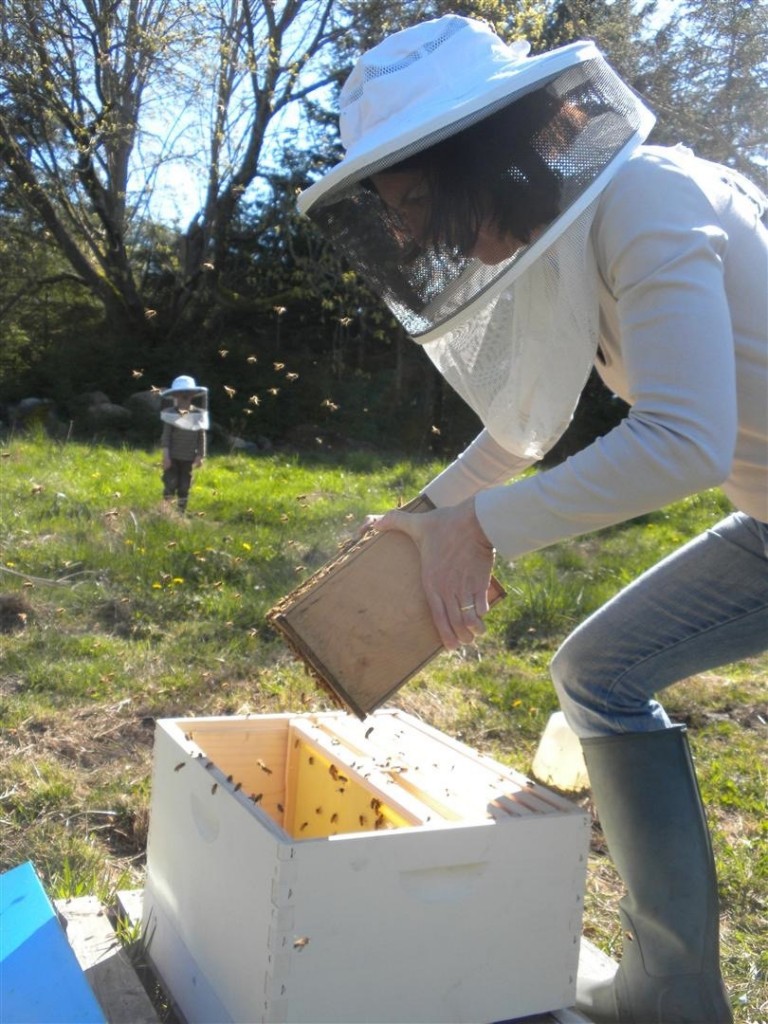 Pouring the colony into the hive.
Pouring the colony into the hive.
Where the bee sucks, there suck I.
Shakespeare
When I was a girl, I kept company with bees. Our house stood on an old orchard that had been subdivided into urban lots; our backyard was thick with grapefruit trees. The trunks were painted bright white to keep them from getting sunburnt. I’d often take a book and climb into a tree –the branches were smooth and sturdy– and spend hours there. Cicadas hummed and left their shed exoskeletons on the bark, bees crowded the blossoms. The bees also tried to drink from our swimming pool. Mostly they drowned, though when I saw one flailing there, I’d cup my palm and scoop her up. I’d softly blow on her wet wings. She’d fly away.
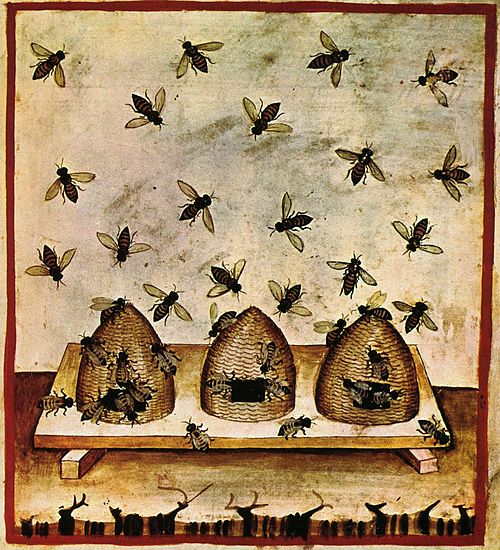 From Taccuino Sanitatis, Casanatense—a medieval health handbook.
From Taccuino Sanitatis, Casanatense—a medieval health handbook.
The bees –along with camping trips, Indian rodeos, swimming, stargazing, cartwheeling, reading, my family and my dog– were part of my ecosystem. I can’t imagine my girlhood without them. I have always loved the taste of honey.
Bees are messengers, intermediaries between the sun and earth, gods and people, life and death. The message bees carry is holy.
That which is not good for the bee-hive cannot be good for the bees.
Marcus Aurelius
Three years ago I set up some hives in my island backyard.
My young son and I were excited when the first colonies arrived. I’d ordered Italians; they came in the mail. Apis mellifera linguistica are the most popular honey bee in the States, known for their affability, their flamboyant honey production, their prodigious breeding. They are also bad housekeepers, improvident, and succumb easily to the cold.
We put on our veils, then poured the bees out from their boxes into the waiting hives.
The hive is shelter, food storage, nursery, palace, and fortress for bees. Wax is secreted from glands in the worker bees’ abdomens. The hexagonal cells of the comb are filled in organized fashion with pollen, honey, eggs and brood. Wild and feral honey bees will find a cave, an eaves, a hole in a wall, any protected enclosure in which to build their comb. After mating, the queen leaves the hive only if there’s an emergency or housing crunch.
Evidence suggests that people have been gathering honey from wild bees for about 15,000 years, and started domesticating bees about 9,000 years ago. Beehive hairdos take their shape from the skep, a hive often woven from straw. Clay pots, mud tubes, tree hollows, and a variety of wooden boxes have all been used by beekeepers as hives. The disadvantage of many traditional hives is that they don’t allow for inspection, manipulation, or easy extraction of honey. Often, all the comb is destroyed when honey is collected.
I use hives that are the industry standard in the North America. Langstroth hives are rectangular wooden bodies that can be stacked. They have neither top nor bottom. Inside, removable frames hang like file folders. Bees will build their comb onto the frames. The bottom boxes are used for brood and pollen. On top are stacked honey supers– shallower bodies also filled with frames. Shallower, because honey is heavy. You put a cover, usually clad in metal for weather protection, on top of it all.
Although a fossilized honey bee, apis neartica, was found in Nevada, honey bees, as we know them, are not native to the Americas. The first colony of apis mellifera likely arrived –along with chickens, Christianity, flintlocks, liquor, and smallpox– with seventeenth-century English settlers in Virginia.
These days, I live on traditional Coast Salish land, and daily drive through a reservation. I have been reminded how in many indigenous traditions, the human self is simply part of nature, there is no neat divorce of soul from body from place. We don’t hold dominion over the fish of the sea, and the fowl of the air, and every living thing that moveth upon the earth. Rather, we are all profoundly and mysteriously connected.
Something the bees have always known.
Thy lips, O my spouse, drop as the honeycomb:
honey and milk are under thy tongue
Song of Solomon 4:11
A virgin queen will loosen her girdle only once. She’ll fly up to the Drone Congregation Area and sleep around, stuffing her spermatheca –a kind of purse she always carries. This one very good time will provide her with all the sperm she’ll ever need to fertilize the millions of eggs she will lay. A strong queen can live for a few years. By contrast, a drone has a brief, if pampered, life. All he does is hang out, eat honey that the female workers have made, and wait for a queen to knock up. His reproductive organ is torn from his body as he mates, then his dead body falls from the sky.
The worker bees have different jobs, there are foragers, defenders, nurses, honeymakers, janitors, undertakers. All of them sing and dance. The constant humming. A complex choreography. A worker waggling her behind, kicking up her heels, turning in figure 8s, is telling her sisters where the nectar is. The waggle dance –official name– is complemented by the tremble dance and the grooming dance.
Singing, dancing girls. Muses. Nymphs.
The nymphs of Artemis were often called Melissae, which means honey bee. Bee larvae, to this day, are called nymphs. The woman who cared for the infant Zeus, fed him goat’s milk and honey, was named Melissa, as was the priestess who refused to reveal divine secrets and who, for her discretion, was ripped to bits by an angry mob. Her dead body gave birth to bees.The woman who was the oracle at Delphi, the woman who gave voice to the Artemis’ twin, the god Apollo, was called the Delphic bee.
The Greeks were great beekeepers, likely having learned from the Minoans, who worshipped the insects. The Minoans held the bull to be a sacred beast, and believed that bees were born from the carcass of a bull. Bees –golden– are symbols of the sun; the Egyptian sun god Ra wept bees for tears. Bulls –crescent horned– are yoked by association to the moon. Artemis was a moon goddess, as well as that of the hunt and wild animals, of virginity and childbirth.
 Gold plaques embossed with winged bee goddesses, found at
Gold plaques embossed with winged bee goddesses, found at
Camiros Rhodes, dated to 7th century BCE.
There is a statue of Artemis at Ephesus in which she is covered with strange protrusions. Some believe the bumps to be eggs, or breasts, or bull testicles, all symbols of fertility. Some, espe-cially when learning that the statue is a re-creation of an earlier wooden one which was decorated with honey-resonant amber drops, see the shape of bees about to emerge, fully grown, from their cells. Artemis was the Greek’s syncretic version of an older, Bronze Age goddess. An earth goddess. When you start to scratch around motherhood and fertility, bees swarm.
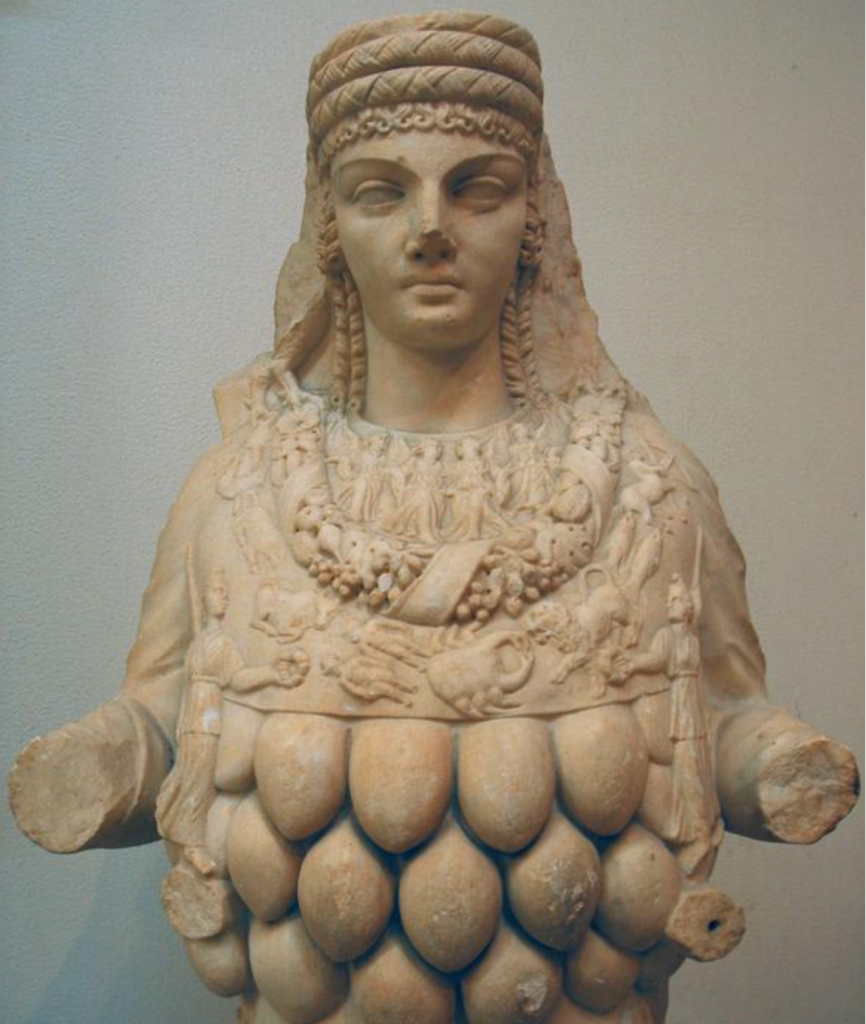 Artemis, the goddess of the wilderness,
Artemis, the goddess of the wilderness,
the hunt and wild animals, and fertility.
Life, death, sun, moon. The bees.
It was easy to love them.
Nine bean-rows will I have there, a hive for the honey bee,
And live alone in the bee-loud glade.
William Butler Yeats, The Lake Isle of Innisfree
I filled troughs with sugar water to feed them. I watched them. I listened to them: bees hum high and fast when they’re angry or scared, sweet and low when they’re feeling good. A man at a dinner party told me about his business, a clinic that administers tiny shocks to the brain. Gentle waves pulsing into a cortex would wash away anxiety, depression, and any number of neurological ailments. Everything is frequency, he said.
I sang to my bees. It calmed me, and perhaps them, too. After the first few inspections, I shed my clunky veil and gloves. It was easier to work bare-handed, bare-headed, easier to remove frames from the hive to see if the queen was laying eggs, if the foragers were gathering pollen, if workers were building comb. The bees were docile. The workers don’t want to sting; they die when they do. Like a drone losing his prick in coitus, a worker sacrifices her barbed stinger, and thus her abdomen, when she attacks. Sometimes a bee would get caught in my hair; if I didn’t freak, she didn’t sting.
Common wisdom is that bees will pick up on fear, anger or agitation, and that’s when they’ll attack. It made me almost giddy to be so unafraid, because I am afraid of so much else. My husband dislikes the bees, he is afraid of them. The reversal in our roles was pleasing.
Beekeepers live long, is the claim. Is it from their equanimity, or from the numerous stings they sustain? My grandmother would sit in a beeline and get herself stung; she swore by this as a cure for arthritis. Raw honey is said to help with allergies to pollen. You can buy royal jelly at a health food store. Science does not yet uphold the claims of apitherapy, but folk traditions around the world do.
That first year, I started with two hives. One colony outgrew their living quarters, so they made a new queen. The new queen stayed in the hive with half the workers, and the old queen took the other half and swarmed, went looking for a new home.
When bees swarm, they are vagabonding. They have no hive, no brood to protect. They have just gorged themselves on honey, and so are plump and pleasantly drunk.
The swarm – tens of thousands of bees– was a droopy fruit hanging from a low branch of an alder; the queen –critical seed– was in the middle. I lopped the branch, gave it a quick shake into a bucket and the bees tumbled down inside. I poured the swarm, thick and gold, into the hive box. Home now, girls. Settle down, lay in stores for the winter. Breed. A queen’s work is never done.
Three thriving hives were mine.
I have a little neck, so it will be the work of a moment.
Anne Boleyn, to her executioner
You get used to dead bees. Every time I filled the sugar water trough, I first dredged out drowned bees. Every time I moved a hive body, I squished bees who failed to get out of the way. I once came across a scene of apicide: a mouse had snuck into a hive and eaten the heads off workers. How the mouse pulled this off without being stung to death, I have no idea.
My Italians made it through the first winter, but then they starved to death in the spring, before the nectar flowed. They’d not put up enough honey to last.
Carniolans –Apis mellifera carnica– a strain from the Balkans, are said to to overwinter well. I ordered three colonies to fill my empty hives. They were beautifully black-banded, and just as good-natured as the Italians had been.
These bees were hale. They swarmed several times, and I was able to catch at least a couple. My apiary grew.
But then, the mites.
These tiny brown dots will eat whole nymphs, and they’ll gnaw away at grown bees. You’ll see mangled wings, bitten thoraces, missing legs. My hives were infested. I tried atomizing thyme oil, dusting with powdered sugar, various natural remedies. I considered an organic acid, but decided against it when I learned that I’d have to wear a respirator mask when using it.
A drastic measure: I decided to re-queen.
Supersedure is when a colony senses that the queen is old or weak; they’ll raise a new queen. The virgin will kill the matriarch and assume the throne. Re-queening is when the beekeeper kills the old queen, and sneaks her replacement into the hive.
Each new queen came in a tiny cage from which she would be released once the colony became accustomed to her smell. Because they had been mated, the queens were marked with a jewel-like dab of green paint between the wings. They’d been bred from, and inseminated by, rugged feral bees from the wilds of the Olympic Peninsula. The offspring of these queens would gradually replace the existing workers. Theoretically, the new colonies would be able to fend off disease and parasites without the aid of acids, chemicals, and constant supplements. My goal was not to raise bees that needed no human intervention, but to create a more balanced bee-human ecosystem.
I opened the hives, and went hunting with needle nose pliers.
I spotted the first few queens on the brooding frames of their respective hives. I nabbed them in the plier’s mouth, and quickly killed them. The last queen, though, was fierce and canny. She ran from the needle-nosed shadow, she jumped from one frame to another. I gave chase. Finally, I had her, and clamped the pliers shut on her belly. I flicked her flattened body aside, and set about hanging the new queen’s cage in the hive.
Looking over at what I thought would be the old queen’s corpse, I saw her dragging her body across the dirt, trying to get back home. There was white liquid oozing out of her. I squashed her totally dead, and felt a little bad.
Eat thou honey, because it is good
Proberbs 24:13
Honey is a busy metaphor, standing in, throughout the world and across centuries, for love, truth, poetry, and wisdom. In substance, honey has been used as food, as medicine, as healing balm, as offering to the gods. Mead predates the cultivation of crops, and is thought to be the oldest fermented beverage around.
Honey will last for thousands of years if kept from moisture; jars filled with honey have been found in ancient tombs. Bees have represented immortality and the afterlife as much as they have fertility.
I couldn’t feed my son honey until he was a year old because of the risk of costridium botulinum, a bacterial spore sometimes –if rarely– present in honey. An immature, or compromised, immune system can’t handle the spore, which can result in fatal botulism.
Mad honey is that made from the nectar of rhododendron, oleandar, bog rosemary, spoonwood, or sheep laurel. It can produce euphoria, hallucinations, vomiting, seizures, or –rarely– death, depending on how much is consumed. It has sometimes been deliberately harvested for medicinal or religious purposes. Pompey the Great lost 1,000 of his soldiers in 67 BCE when the ragtag band of Persians whom they were chasing placed combs of mad honey along the route. The Greeks gorged themselves, became disoriented, and then were easily slaughtered.
Bees make honey so that they have something to eat in the winter. As a beekeeper, you want to steal modestly: take too much, and your bees will starve. In the first year of my beekeeping, I didn’t harvest any honey, figuring that the bees had been so busy building comb, establishing home, that they needed all the honey. The second year, though, was sweet.
When harvesting honey, use a hot knife or sharp pick to scrape the wax sealing from the cells. You can make an extractor out of bicycle wheels and a barrel, but I borrowed a sturdy, factory-made one from a friend. The frames are held upright by what would be the spokes of a wheel. You turn the crank on top, the frames whirl around. Centrifugal force spins the honey out from the comb onto the sides of the cylinder, and from there it drips down to the bottom.
 Harvesting honey with a friend.
Harvesting honey with a friend.
My son helps with the harvest. Helps, by opening his mouth under the spigot at the bottom of the honey extractor. Helps by licking the comb. We are sticky at the end of the day, and greatly pleased with our jars of gold.
Because the Bee may blameless hum / For Thee a Bee do I become
Emily Dickinson
There I was –acrophobe– perched on the top rungs of a telescoping ladder. One of my colonies had swarmed and had found temporary refuge high in a cedar. My plan was to shake them into the bucket I held.
Down below, a neighbor, my son, and my husband watched. My husband was videotaping me. I am camera shy. He was asking me technical questions about bees, questions to which I did not know the answers, and was offering helpful advice on how best to catch them. He doesn’t even like the bees. I was agitated, which is almost like asking to be attacked.
The guard bees came right at my face. I was stung, once in the corner of each eye.
I’d forgotten how much a sting hurts, what a wallop a tiny insect can pack.
The arrow from an archer’s bow is like the stinger from a bee: a transformative prick. No wonder Eros –whose arrows caused the ache of desire– along with Artemis –whose arrows caused merciful death– was associated with bees.
At first, the stings were red and warm to the touch, but not worrisome. I’d been stung on my hands and legs plenty before, and had not violently reacted. I went to sleep that night thinking I’d be fine by morning. I woke to the sound of my husband taking a picture of my face. I couldn’t open my eyes, they were swollen shut.
When I could at last pry my eyes into narrow slits and see, I didn’t recognize myself. Neither did anybody else. My blown-up eyelids made for huge, protruding orbs. My face was perfectly round, with only the barest suggestion of a nose. Give me some antennae and a pair of sheer wings, and I’d have become as one of them. A bee.
The itching was hell. I wanted to claw my face off. I spent days high on Benadryl, icing my head. The swelling didn’t diminish at first, but it moved. Down. My high cheekbones became flappy jowls. My neck became a flaccid, wobbly thing. I think of my clavicle as my best feature: it disappeared by the end of the week. And then it was all gone, as suddenly as it had come on.
The queen I’d killed months before, the one who’d dragged her pinched body across in a defiant gesture, it was her colony that swarmed, that got me. I like to think it was some kind of blood memory, passed down through quick generations. Fair vengeance.
We had a visceral relationship, me and the bees.
One day, a few months after the big sting, I woke with an emptiness inside me, inside the place where I thought about bees. I felt a stillness, a silence. And sure enough, when I tramped out to check the hives, all my bees were gone.
This was not swarming, when two queens split the queendom. This was not colony collapse, when the workers abandon their queen. This was absconding, when the queen leads all her subjects away. Let’s blow this popsicle stand. And it wasn’t just one hive, it was all five.
I’ve asked experts, and nobody can guess why my bees absconded. They were well-sheltered, healthy, mite-free, and had built up lovely comb. It was almost winter. Leaving would likely mean death.
I imagine my queens out in the wild, tasting the air, gauging the sun.
Enough of domestication!
Willing to take a chance.
—Julie Trimingham
Notes:
King James Bible, Genesis 1:28: And God blessed them, and God said unto them, Be fruitful, and multiply, and replenish the earth, and subdue it: and have dominion over the fish of the sea, and over the fowl of the air, and over every living thing that moveth upon the earth.
In addition to the internet, useful sources include:
- The Sacred Bee in Ancient Times and Folklore, Hilda M. Ransome, 1937, reissued by Dover Publications
- Bees, lectures by Rudolph Steiner, Anthroposophic Press
- Toward Saving the Honeybee, by Gunther Hauk, Biodynamic Farming and Gardening Association
- Beekeeping for All, Abbé Émile Warré, 1948, translated by Patricia Heaf and David Heaf, Northern Bee Books
- The Beekeeper’s Handbook, Diana Sammataro and Alphonse Avitabile, Cornell University Press
Julie Trimingham was born in Montreal and raised semi-nomadically. She trained as a painter at Yale University and as a director at the Canadian Film Centre in Toronto. Her film work has screened at festivals and been broadcast internationally, and has won or been nominated for a number of awards. Julie taught screenwriting at the Vancouver Film School for several years; she has since focused exclusively on writing fiction. Her online journal, Notes from Elsewhere, features reportage from places real and imagined. Her first novel, Mockingbird, was published in 2013.
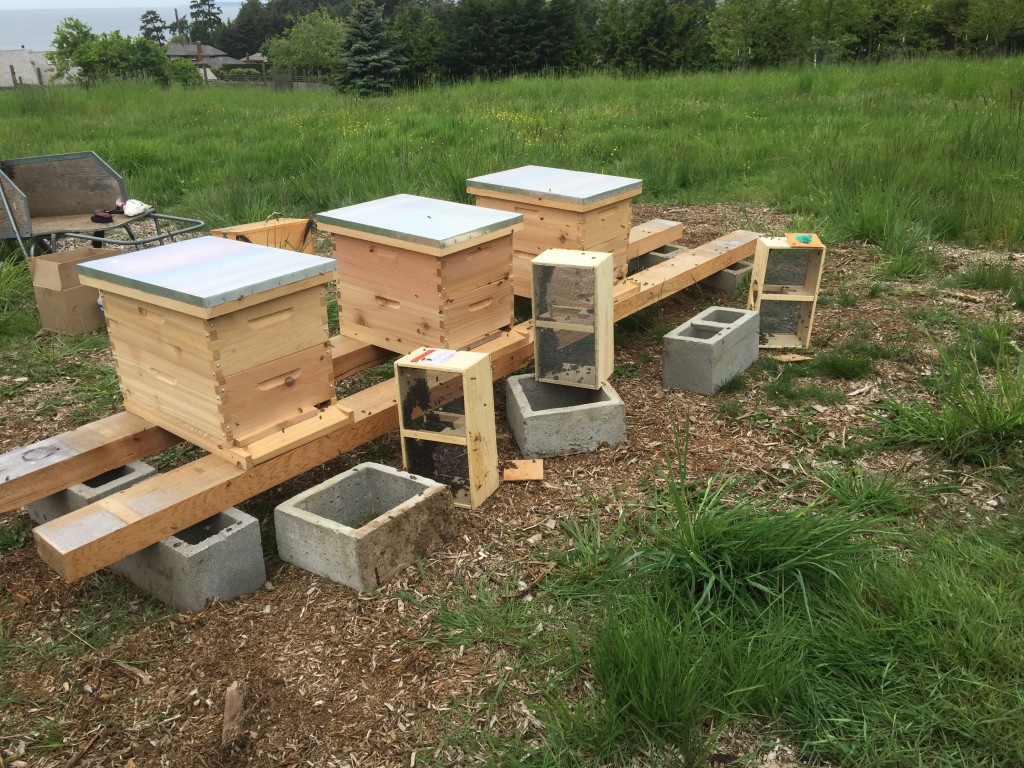
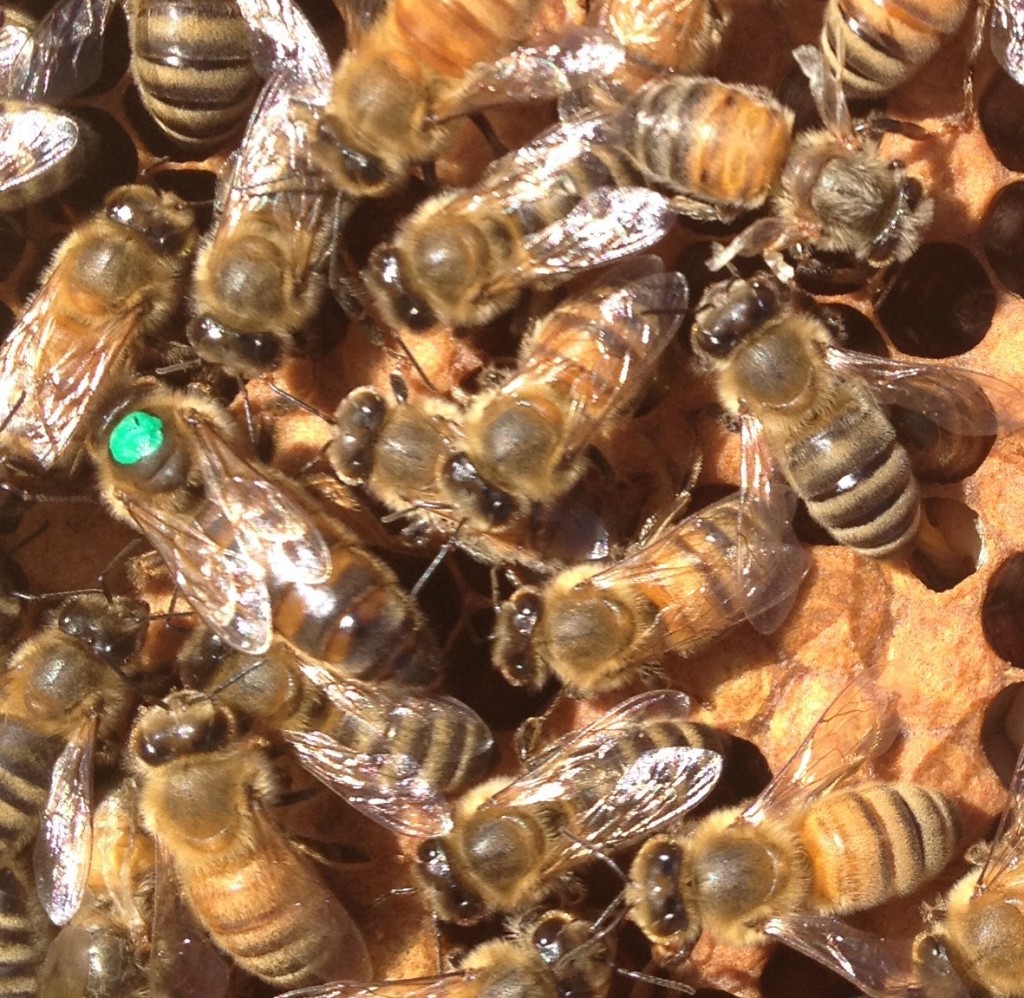

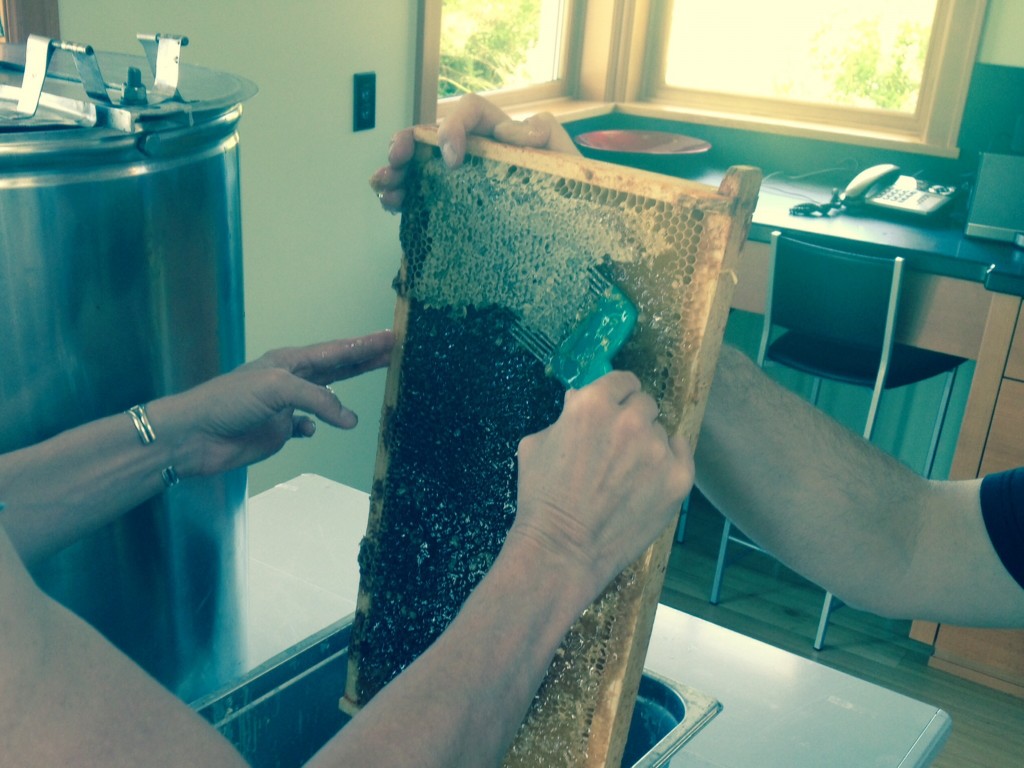
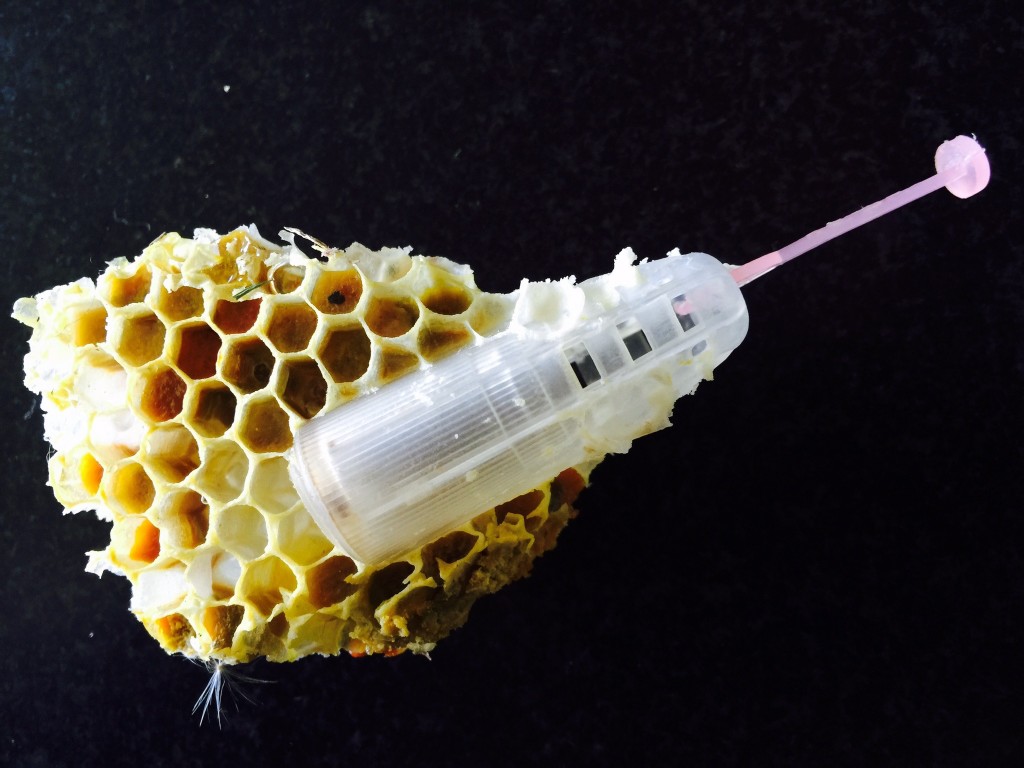


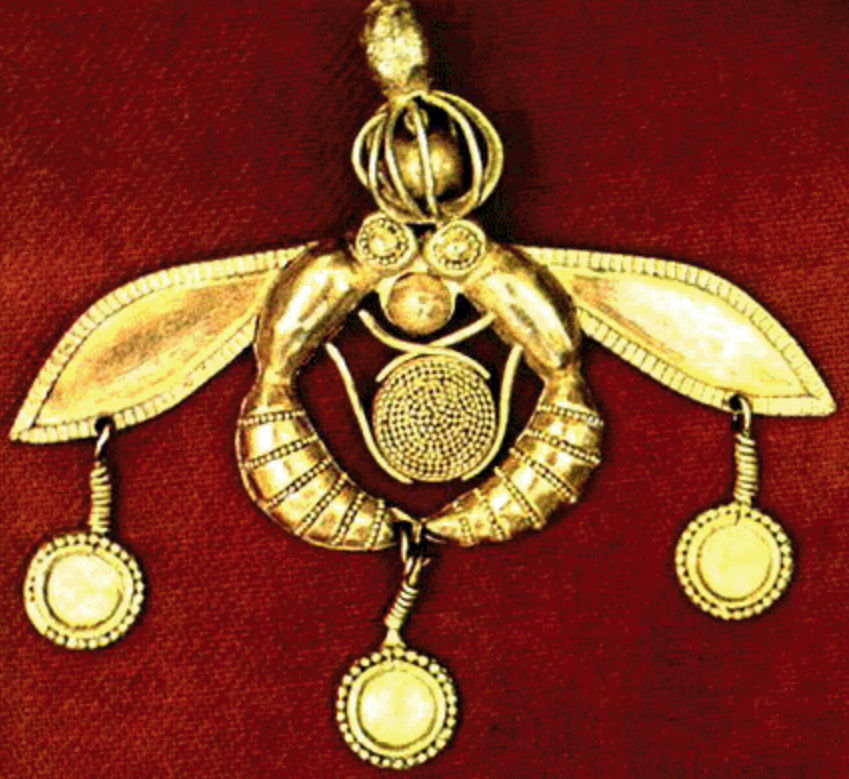

A gorgeous essay!
Thank you, Carroll!
Thank you for the essay. More bee mania from the Indian subcontinent, from a buzz.
Let every wind that blows drop honey
Let the rivers and streams recreate honey
Let the dawn and evening be full of honey
Let the dark particles be converted to honey
— from the Rig Veda
The Buddha invoked bees as compassionate being:
Let the wise man live
in the flower of his village,
like the bee, gently taking flowers’ honey,
but not harming the blossom
it’s colour and scent.
Kalidasa, possibly 4th century, Sanskrit court poet:
Sprays of mango blossoms—his sharp arrows,
honey-bees in rows –the humming bowstring:
Kama *sets out to break hearts…
• The god Kama is akin to an adult Cupid, sans wings; being invisible he’s everywhere.
Andal, 8th century Tamil mystic poet who is regarded as a goddess sings:
The rains shall never fail; thick red paddy will
tousle the wind, in flooded fields amidst the sprouts
bright carp will leap, lotuses will rock spotted bees to sleep
And this is mine:
“Drenched rapture
as in lotuses filled with rain, swollen
pollen and drowned bees…“
Priya, thank you so much for the word and images from the subcontinent. I especially loved your own 🙂